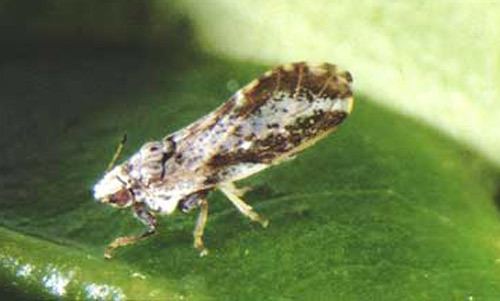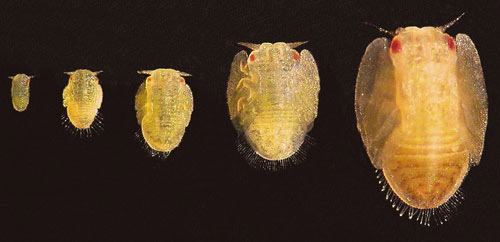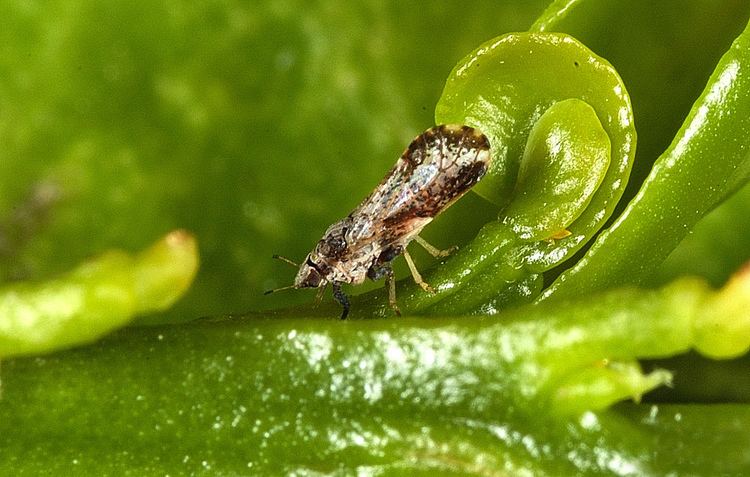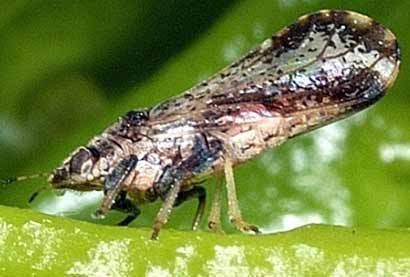Superfamily Psylloidea Higher classification Diaphorina | Family Psyllidae Rank Species | |
 | ||
Similar Diaphorina, Jumping plant louse, Candidatus Liberibacter, Insect, True bugs | ||
The Asian citrus psyllid, Diaphorina citri, is a sap-sucking, hemipteran bug in the family Psyllidae. It is an important pest of citrus, as it is one of only two confirmed vectors of the serious citrus greening disease. It is widely distributed in southern Asia and has spread to other citrus growing regions.
Contents

Distribution
The Asian citrus psyllid originated in Asia but it is now also found in parts of the Middle East, South and Central America, Mexico, and the Caribbean. In the United States, this psyllid was first detected in Florida in 1998 and is now also found in Louisiana, Georgia, Arizona, South Carolina, and Texas . In Southern California, the San Joaquin Valley, and Central Coast counties, such as San Luis Obispo an eradication programme has been instituted in an attempt to prevent it becoming established. In the whole of the United States and its territories, areas where this psyllid are found are under quarantine restrictions.
Description

The adult psyllid is about four millimetres long with a fawn and brown mottled body and a light brown head. It is covered with a whitish, waxy secretion which makes it look dusty. The forewings are broadest at the back and have a dark edging around the periphery with a pale gap near the apex. The antennae are pale brown with black tips. These features distinguish it from the superficially similar African citrus psyllid. It typically adopts a head down, tail up posture as it sucks sap. Aphids are often also present on citrus and psyllids can be distinguished from them by being more active, jumping insects, whereas aphids are sedentary. In addition, the antennae of a psyllid has ten segments whereas those of aphids usually have four or six segments. Most aphids have cornicles on the abdomen and psyllids lack these.

The psyllid nymph moults five times. It is a yellowish-orange colour and has no abdominal spots. The wing pads are prominent, especially in the later instars.

The eggs are approximately 0.3 millimetres long, almond-shaped, thicker at the base and tapering toward the top. They are at first a pale colour but turn yellow and later orange before they hatch. The long axis is placed vertical to the surface of the leaf.
Life cycle

Eggs are laid on the tips of growing shoots, between and near the unfolding leaves. A female may lay up to 800 eggs during her lifetime which may be several months. The whole development cycle takes from two to seven weeks depending on the temperature and the time of year.
Predation
The wasp species Brachygastra mellifica is a common predator to D. citri.
Damage
Psyllid nymphs are found on new shoots of citrus trees. As they feed, they produce a toxin that causes the plant tips to die back or become contorted, preventing the leaves from expanding normally. Of more importance is the fact that they are vectors for the bacteria that causes one of the most devastating of citrus diseases, Huanglongbing. Affected trees bear small, asymmetrical fruit which are partially green and which are unsaleable because of their poor size and quality.
Control
The Asian citrus psyllid has a number of natural enemies including hoverflies, lacewings, several species of ladybird and a number of species of parasitic wasp. One of these wasps, Tamarixia radiata, has proved very effective at controlling the pest and has been successfully released and become established in a number of citrus growing areas including Florida. Both adults and nymphs of the psyllid can be controlled by the use of a wide range of insecticides. Citrus greening disease is best controlled through an integrated strategy involving the use of healthy planting material, the prompt removal of infected trees and branches and the control of vectors.
